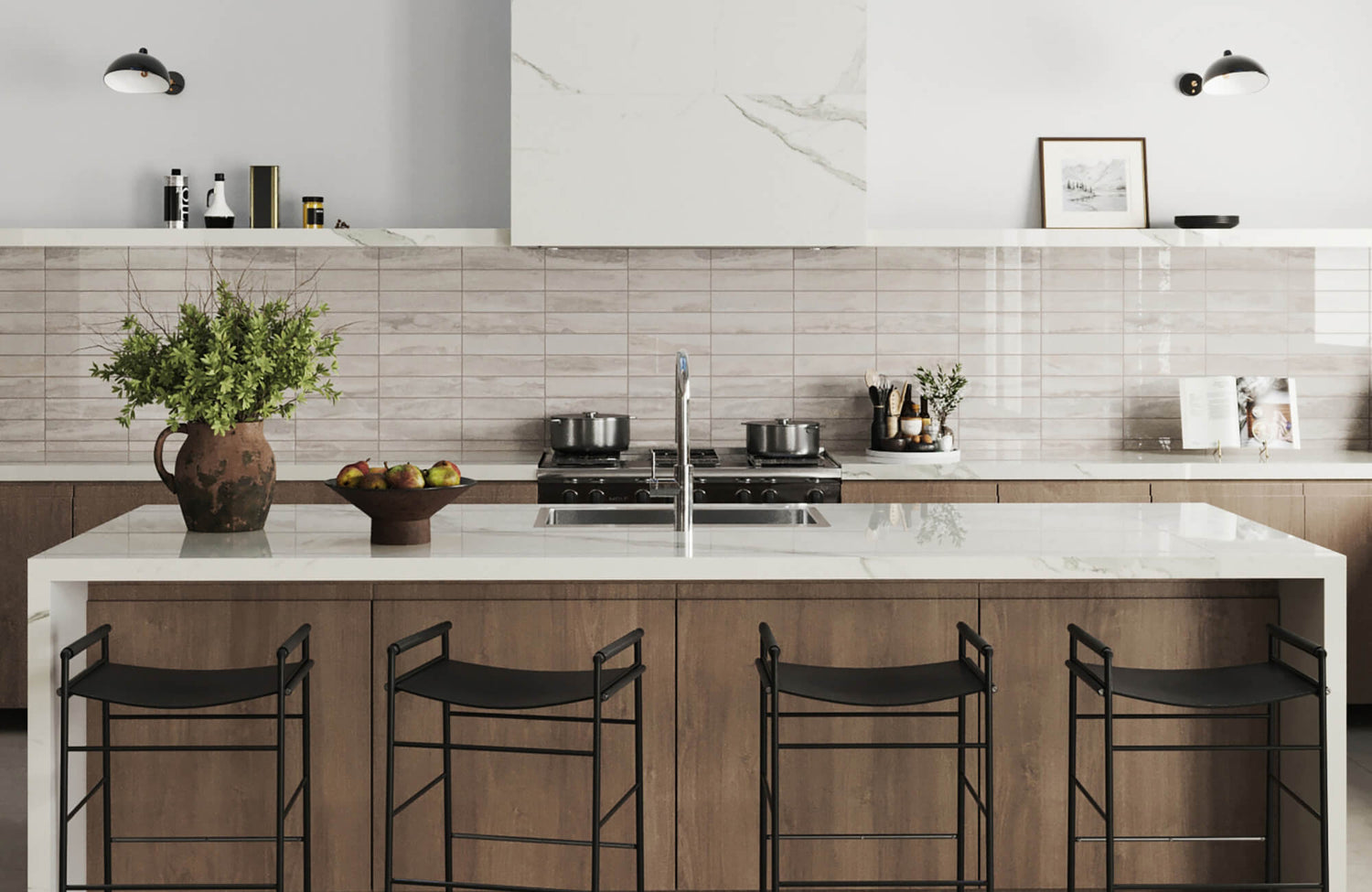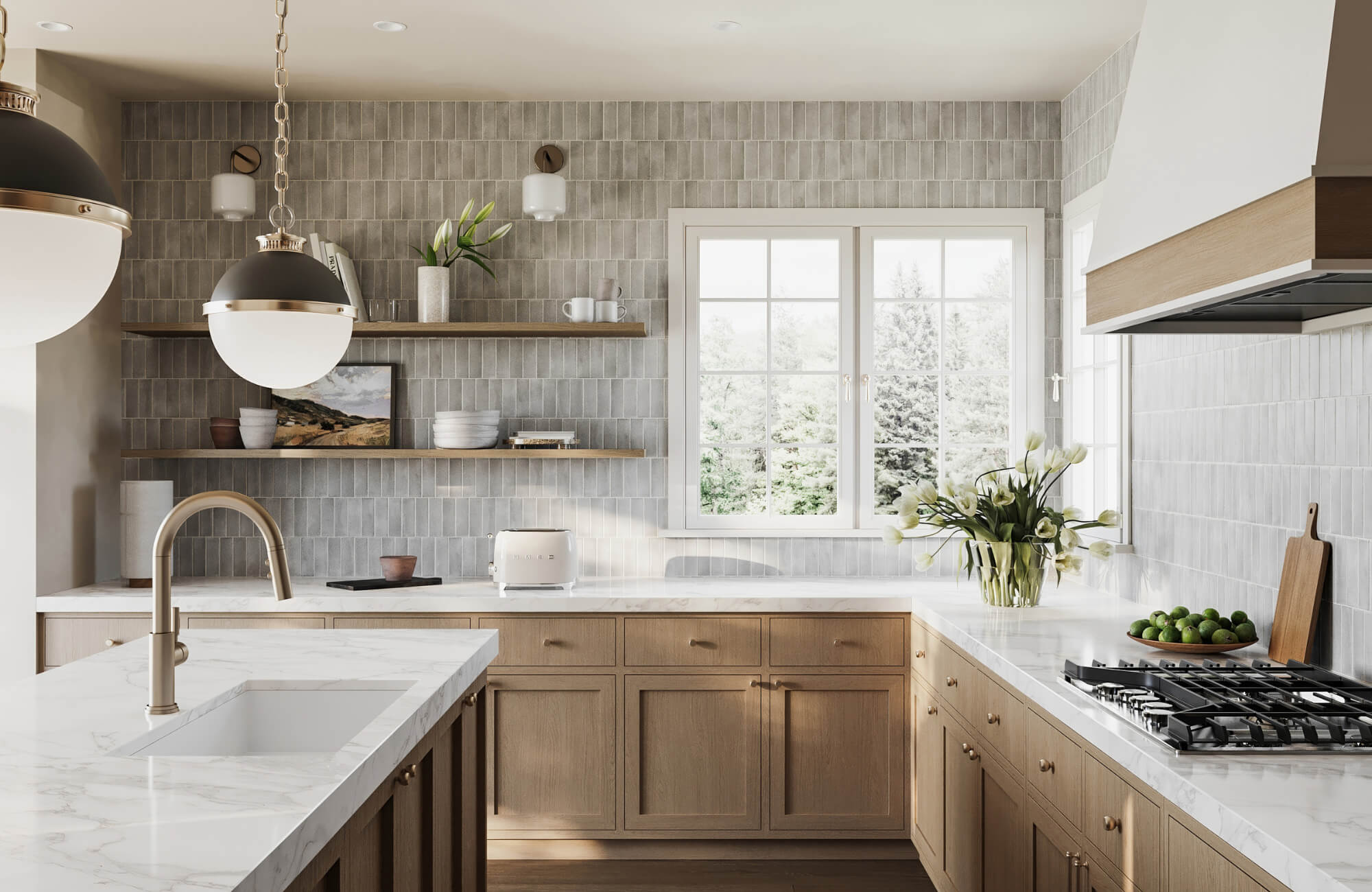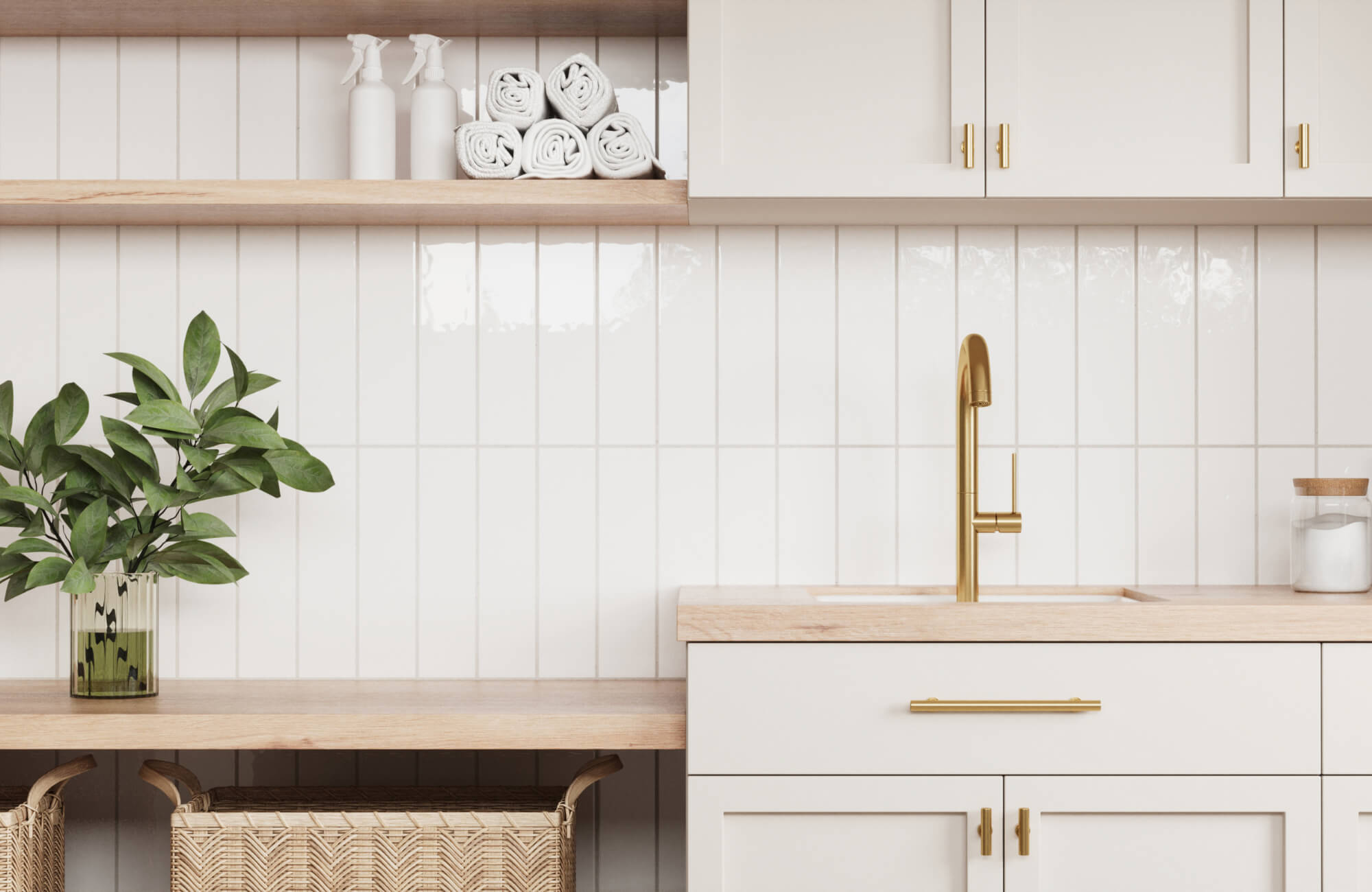Subway tile, a favored choice for kitchen backsplashes for over a century, presents an enduring design with its iconic rectangular shape and sleek lines. When selecting subway tiles for a coastal kitchen, the decision between a glossy or matte finish is crucial, as both options can complement the light, airy atmosphere typical of seaside homes. Understanding the pros and cons of glossy and matte finishes will help you determine which one aligns best with your coastal design preferences.
Is Matte Or Glossy Subway Tile Better?
Choosing between matte or glossy subway tile largely hinges on individual taste. Glossy subway tiles feature a shiny, reflective surface that enhances light and can make any room appear more vibrant and clean. In contrast, matte subway tiles possess a dull, non-reflective finish, offering a subdued and understated effect.
When comparing these two finishes, there are several key distinctions to consider:
Light Reflectance
Glossy tiles reflect more light, contributing to a brighter room, whereas matte tiles absorb light, resulting in a more muted appearance.
Visual Impact
In smaller spaces, matte tiles can sometimes appear flat and lack visual depth, which can make the area feel less dynamic compared to the dimensional effect provided by glossy tiles.
Visibility of Grout Lines
With a matte finish, grout lines can appear darker and more prominent because matte surfaces do not reflect light as uniformly as glossy finishes.
Maintenance and Cleanliness
Glossy ceramic or porcelain subway tiles are generally easier to clean and more resistant to stains, making them a practical choice for busy areas. Those with matte finishes, however, may require more frequent upkeep.
Appearance of Imperfections
Matte subway tiles are better at concealing imperfections in the tile itself, the grout lines, and the underlying wall surface. Glossy tiles, on the other hand, tend to highlight flaws due to their reflective nature.
Being aware of these considerations can help you make a more informed decision when choosing the finish of your subway tiles.
Which Tile Finish Is More Timeless?
Subway tile backsplashes are a staple in both modern and classic kitchen designs, and the choice between a glossy or matte finish often depends on the aesthetic you’re trying to achieve.
Glossy subway tiles, particularly in ceramic and porcelain, exude a classic charm that harkens back to early 20th-century architectural styles. Their smooth, reflective surface brightens up a space by bouncing light around the room, making them a popular choice for smaller kitchens or those with limited natural light. This traditional finish has also remained a go-to for decades due to its crisp, clean appearance and ability to pair effortlessly with both vintage and transitional design elements.
Matte subway tiles, also available in ceramic and porcelain, offer a more modern and refined aesthetic. Their soft, non-reflective finish creates a calm, understated look that aligns beautifully with minimalist and contemporary kitchens. Edward Martin’s Dani 1.6x5 Matte Ceramic Tile in Cream, as shown in the photo above, is a perfect example. Its muted surface and subtle neutral tone lend a touch of elegance without competing with other design features, making it a sophisticated yet flexible choice.
Both finishes offer remarkable versatility and timeless appeal, making them suitable for transitional spaces as well. The compact size and subtle grout lines of subway tiles ensure that they complement virtually any coastal kitchen design, preserving their timelessness regardless of the chosen finish.
Which Will Increase My Home's Value More?
Kitchen renovations that utilize top-quality materials typically provide the best return on investment. Both glossy and matte subway tiles, especially when crafted in durable ceramic, meet this standard with ease.
Subway tile is a universally appealing material that enhances the aesthetic and value of your home, making your kitchen more attractive to potential buyers. Whether you choose a reflective finish or something more subdued, the key is in the overall execution. For example, a soft neutral like Edward Martin’s Jaden 2.5x16 Glossy Ceramic Tile in Dove (displayed in the photo above) brings a light, airy feel to the space while delivering timeless elegance that buyers often appreciate.
Rather than focusing solely on finish, it’s more effective to select a tile that complements your broader design scheme. A kitchen that feels cohesive, featuring carefully chosen finishes and well-balanced color palettes, will always stand out in the market, ultimately contributing to your home's resale value.
Finding Your Ideal Tile Finish for Coastal Kitchen Design
When it comes to enhancing your coastal kitchen with subway tile, both glossy and matte finishes have their unique advantages and aesthetic impacts. Glossy subway tiles, typically made of ceramic or porcelain, bring vibrancy and light to a space with their reflective surfaces, making them a classic choice that has stood the test of time in kitchen design. They are easier to clean and maintain, and their ability to reflect light can make smaller spaces appear larger and more welcoming.
Matte subway tiles, however, offer a more contemporary and understated elegance, perfect for those who prefer a subtler design. They excel in hiding imperfections and deliver a sophisticated, modern look, though they may require more upkeep due to their tendency to be less stain-resistant and darker grout lines.
Ultimately, the decision between glossy and matte should align with your personal style, kitchen's functional needs, and the overall design vision of your home. To help visualize how each finish would look in your own space, consider using our advanced AR technology, which allows you to see the impact of your tile choice in real-time, right in your kitchen. This tool can be a crucial aid in deciding which tile finish best suits your home’s aesthetics and functionality.
Note that both options are timeless in their own right and can enhance the marketability and value of your property, ensuring that any investment in a quality subway tile backsplash is a sound one. Whichever you choose, the result is sure to elevate the beauty and functionality of your coastal kitchen.
Frequently Asked Questions
Here are some frequently asked questions to help you decide between glossy and matte subway tiles for your coastal kitchen. Discover the unique benefits of each finish to choose the best option for your home's style and needs.
1. What layout patterns work best for a relaxed coastal kitchen vibe?
For a relaxed coastal kitchen, go for simple, easy-flowing patterns. A classic running bond (brick) offers a timeless, breezy feel, while a vertical stack bond gives a modern touch that mimics beachside shiplap. Want a bit more texture? Try a herringbone pattern in soft matte finishes—it subtly echoes the movement of water without overpowering the calm vibe.
2. Do certain subway tile colors work better in coastal-themed kitchens?
Yes. Soft blues, sandy beiges, crisp whites, and seafoam greens evoke a relaxed, coastal vibe. These shades reflect natural light well and pair beautifully with natural textures like driftwood, rattan, or light-toned countertops.
3. What type of grout should I use with subway tiles?
It's best to use a grout that resists moisture and mold, such as epoxy or polymer-modified grout. These offer better durability in humid environments and are easier to clean—ideal for spaces near the coast.
4. How can I use subway tiles beyond the kitchen backsplash?
Subway tiles can be extended to full walls, used on kitchen islands, or even wrapped around range hoods for a custom look. They also work well as a unifying element between the kitchen and adjoining spaces like dining areas or butler’s pantries.
5. How should I decide between glossy and matte finishes for my kitchen remodel?
Consider your personal style preferences, the functional needs of your kitchen, and how each finish will fit into your overall design scheme. Glossy finishes are ideal for those seeking a bright, clean look, while matte finishes suit those looking for a more subtle and sophisticated aesthetic.
If you're unsure which finish would best meet your requirements, consulting a professional can provide valuable insight and help you make an informed decision that aligns with your lifestyle. Ultimately, the best choice is the one that enhances the beauty and functionality of your kitchen in a way that feels right for you












